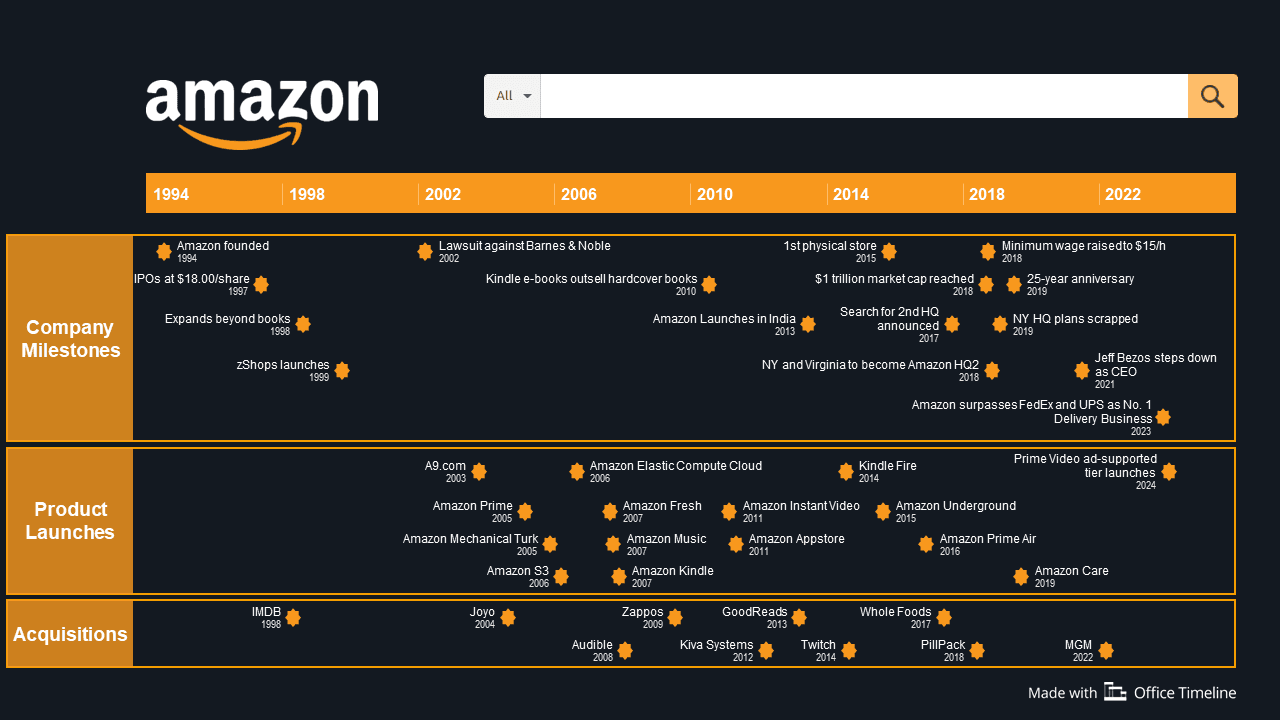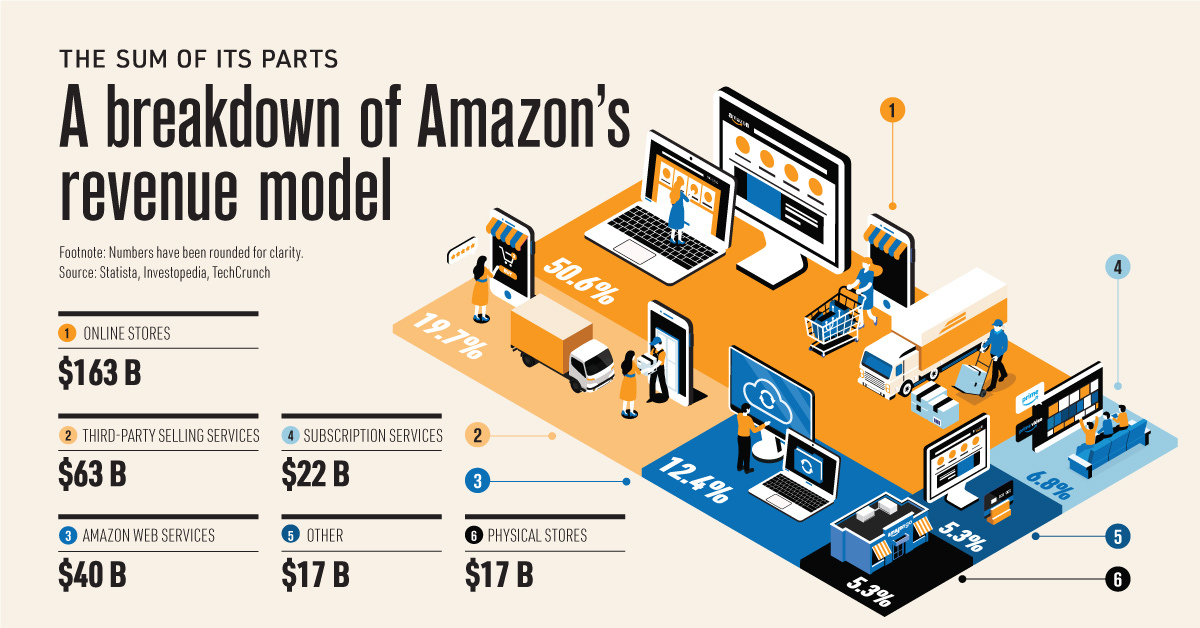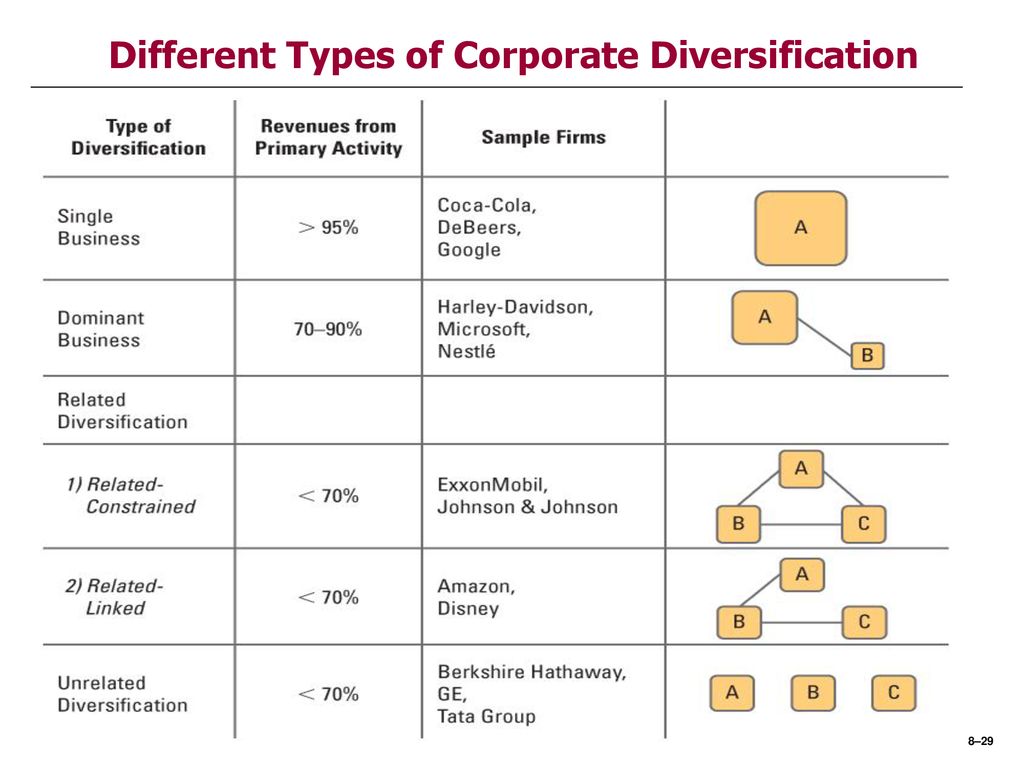Amazon is a company that has consistently diversified its operations since its inception in 1994. At first, Amazon was an online bookstore, but over time it has expanded into a wide range of other sectors, including e-commerce, cloud computing, artificial intelligence, and even healthcare. This diversification has allowed Amazon to weather economic downturns and emerge as a dominant force in the global marketplace.
One of the key drivers of Amazon's diversification has been the company's focus on innovation. Amazon has consistently invested in research and development, and this has allowed it to develop new products and services that meet the evolving needs of its customers. For example, Amazon's cloud computing platform, Amazon Web Services (AWS), has become one of the leading providers of cloud computing services in the world, thanks to its scalable, reliable, and cost-effective infrastructure. This diversification has also allowed Amazon to tap into new sources of revenue, such as advertising and subscription services, which have helped to fuel the company's growth.
Another factor that has contributed to Amazon's diversification is the company's focus on customer service. Amazon has always placed a high value on customer satisfaction, and this has helped it to build a loyal customer base that is willing to try new products and services. This, in turn, has allowed Amazon to expand into new markets and sectors, as it has been able to leverage its strong reputation and customer base to attract new customers.
Despite the many benefits of diversification, it is important to note that it also carries some risks. One of the main risks is that Amazon may spread itself too thin by trying to be everything to everyone. This could result in the company losing focus and diluting its brand, which could ultimately harm its long-term prospects. Additionally, diversification requires significant investments in new technologies and infrastructure, which can be costly and may not always pay off.
Overall, Amazon's diversification has been a key factor in its success as a company. By constantly innovating and expanding into new markets, Amazon has been able to stay ahead of the curve and maintain its position as a global leader in e-commerce and beyond. However, it is important for the company to continue to carefully manage its diversification efforts and ensure that it is able to deliver value to its customers while also maintaining its financial stability.
Evaluate Amazon’s Diversification Strategy.

Conclusion: How to Diversify off of Amazon Diversification mitigates risk, improves brand awareness, enhances sales traffic, and builds a loyal customer base. While the introduction of strategies aimed at diversification is essential for successful business performance, the steps taken to diversify the corporate environment may not necessarily lead to desirable outcomes. Whereas Amazon has achieved very high volume of sales and gained important market shares in the book industry, the company has never been profitable. Each seller is permitted to carry only a specific set of ASINs. This can help you build a sturdy list of brand fans regardless of your e-commerce platform. For instance, except for its movies and other digital items, the other product lines are all not in the category of those that provide this gratification to the customers.
Amazon Go Company's Diversification Strategies

Morningstar: © 2018 Morningstar, Inc. For example, as consumers develop increasing interest in online retail, the company benefits from higher sales revenues, especially when considering the popularity of the Amazon brand. Predicted Success of Offline Retail Segments After the initiation of Amazon Go, the first convenience product store without cashiers, Amazon entered the market of offline retail segments. The customers, services, product listings, and branding have made it an e-commerce star. Studies show that consumers buy based on beliefs and branding.
TechCrunch is part of the Yahoo family of brands

After the bubble burst: How small High Tech firms can keep in Front of the Wave, The Academy of Management Executive, Vol 15, Issue 3, pp114-124. Image source: Getty Images Cloud computing Amazon Web Services AWS is the world's leading provider of public cloud services, with an estimated 32% market share. But over the last 26 years, the company has not only become the largest e-commerce E-commerce Currently, Amazon owns nearly 39% of the e-commerce market in the U. Total Global Strategy: Managing for worldwide competitive advantage. This credibility and authenticity can improve your Amazon and website sales. Harvard Business School Press.
Why Amazon's History of Diversification should be Acknowledged by all Startups

Because of the large amount Value Chain Analysis : E Commerce Essay Value Chain Analysis Introduction The expansion of globalization has led to the emergence of the digital economy. To ensure widespread coverage and lessen downtime risks or outages, Amazon has set up operations in key regions around the world to include North America, South America, the EMEA region that includes Europe and the Middle East, and Asia and the Pacific. A strategic objective associated with this intensive strategy is to grow the e-commerce business through an aggressive acquisition strategy. Feel free to contact Andrew on LinkedIn , Facebook , Twitter or Instagram with any questions. At the same time, third-party sellers with robust inventory management teams and extensive Amazon experience can easily flex their skills in a head-to-head face off with competitors. With regard to the Amazon Web Services subsidiary, the cloud computing services have a global market scope due to its online-enabled operations. Remember that this company is not just an Internet retailer but also a manufacturer of numerous products, including consumer electronic devices, as well a provider of online-enabled and cloud computing services.








